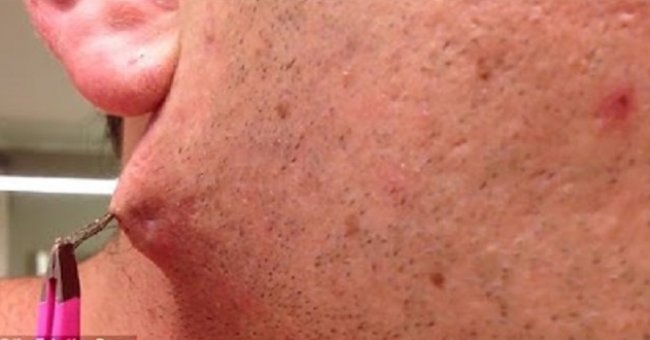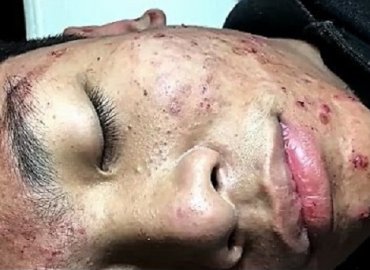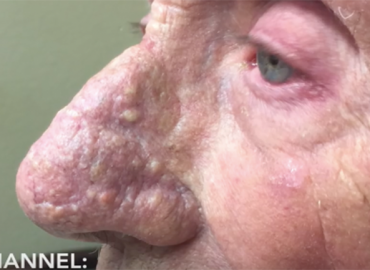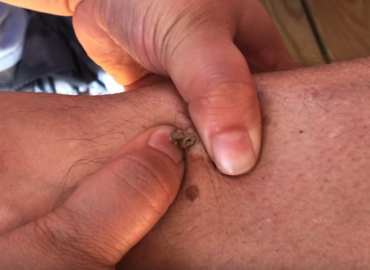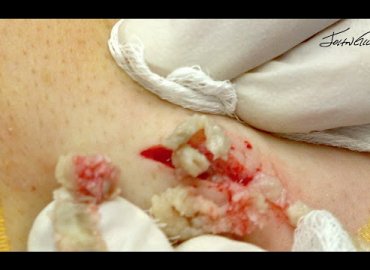What is an ingrown hair cyst?
An ingrown hair cyst refers to an ingrown hair that turns into a cyst — a large bump that extends between the skin’s surface and deep underneath it. The appearance is a cross between a regular ingrown hair and an acne cyst, though this is a different condition.
These types of cysts are common among people who shave, wax, or use other methods to remove their hair. Although you may be eager to get rid of these cysts simply because of their appearance, it’s also important to watch for signs of an infection.
Keep reading to learn what causes these cysts to form, plus how to treat them and prevent them from returning.
Tips for identification
As the name suggests, ingrown hair cysts start off as ingrown hairs. At first, you might notice a small pimple-like bump that has a hair at its surface. It may also be red in color. Over time — if the ingrown hair doesn’t go away — the small bump can transform into a much larger one. The resulting cyst can be red, white, or yellow in color. It may also be painful to the touch.
Although ingrown hair cysts can occur anywhere on your body, they’re more likely to develop in areas that are prone to ingrown hairs.
This includes your:
- armpits
- face
- head
- neck
- legs
- pubic region
An ingrown hair cyst is not the same thing as cystic acne, though the two conditions can look similar. An infected ingrown hair cyst starts off as a regular ingrown hair, and acne cysts are caused by a combination of oil and dead skill cells that accumulate deep under the hair follicle.
Cystic acne can be widespread in one area, such as your back or face. Ingrown hair cysts, on the other hand, are smaller in number and contained — you may just have one. And unlike pimples, ingrown hair cysts won’t have a head.
What causes an ingrown hair cyst to form?
Improper hair removal techniques may lead to ingrown hair cysts. Whether you shave, wax, or tweeze, removing hair isn’t always clear-cut. The process itself can cause swelling, which may irritate your skin and lead to pimples and resulting cysts.
Removing a hair can also cause the new hair that grows in its place to grow incorrectly. The new hair may grow sideways and eventually curl back down. When this happens, the pore can close over the hair so it becomes stuck, or ingrown. The skin responds by becoming inflamed, treating the curled-back hair as a foreign object.
According to the Mayo Clinic, ingrown hairs alone are most common in African-American men who shave. You may also be at greater risk for developing these types of cysts if you have naturally curly hair.
What treatment options are available?
The primary goal of treatment is to reduce surrounding inflammation and decrease your risk for infection.
Over-the-counter (OTC) medications containing benzoyl peroxide, such as Neutrogena On-the-Spot, or retinoids, such as Differin Gel, can reduce inflammation and decrease the size of the cyst. Prescription acne medications might be needed if OTC methods don’t work. For example, your healthcare professional may prescribe a steroid cream to help reduce redness and pain around the cyst.
You should never pop an ingrown hair cyst, as this can increase your risk for infection and scarring. You also shouldn’t try to lift the hair out with tweezers like you might with a normal ingrown hair. At this point, the hair is embedded far too deep underneath the cyst for you to pull out.
Instead, you should encourage the cyst to go down and the hair to straighten upward by gently scrubbing the cysts with a warm cloth a couple of times a day.
If you do develop an infection, your healthcare professional will prescribe either topical or oral antibiotics. This will help reduce inflammation and pain while also preventing the infection from spreading and getting worse.

